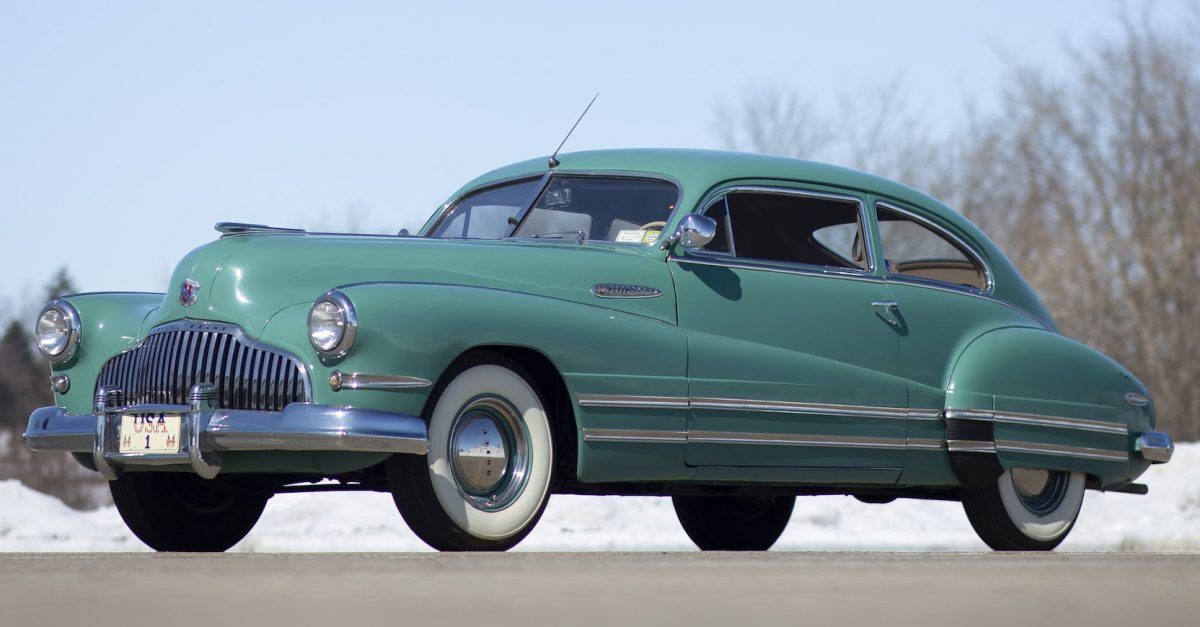In the realm of restored classics, a symphony of history, artistry, and innovation unfolds, where the echoes of the past reverberate through the corridors of time, bridging the gap between generations.
From majestic architecture to iconic automobiles, the meticulous restoration of these timeless treasures not only safeguards their legacy but also breathes new life into our collective heritage, offering invaluable insights into the triumphs and tribulations that have shaped our world.
Historical Significance
Restored classics hold immense cultural and historical value, preserving and showcasing the past for generations to come. They serve as tangible links to bygone eras, providing insights into the artistic, technological, and societal norms of their time.
Through meticulous restoration processes, these classics are meticulously brought back to their former glory, offering a glimpse into the craftsmanship, design, and aesthetics of the past. They become living testaments to the ingenuity and creativity of their creators, showcasing the evolution of human artistry and innovation.
Examples of Restored Classics
Numerous restored classics have had a profound impact on our understanding of history and culture:
- The Sistine Chapel ceiling by Michelangelo, a masterpiece of Renaissance art, has been meticulously restored to reveal the vibrant colors and intricate details of the original.
- The Great Wall of China, a symbol of ancient Chinese engineering prowess, has undergone extensive restoration to preserve its architectural integrity and historical significance.
- The Apollo 11 spacecraft, which carried the first humans to the moon, has been restored and displayed in the Smithsonian National Air and Space Museum, inspiring generations with its technological achievements.
Restoration Techniques
Restoring classic vehicles is an art form that requires meticulous attention to detail and a deep understanding of the original design. Over the years, various techniques have been developed to ensure that these automotive treasures are brought back to their former glory.
Materials and Techniques
- Metalworking:Classic cars often require extensive metalworking to repair rust damage, dents, and other imperfections. This involves skilled craftsmanship and specialized tools, such as hammers, dollies, and welding equipment.
- Bodywork:The body of a classic car is typically made of metal, and it requires careful restoration to maintain its original shape and contours. This process involves removing dents, filling in holes, and smoothing out any imperfections.
- Paint:The paint job is one of the most important aspects of a classic car restoration. The original paint color and finish must be meticulously matched to ensure authenticity. This involves selecting the right paint type, applying it correctly, and achieving the desired sheen.
- Interior:The interior of a classic car is often made of leather, vinyl, or fabric, and it requires careful attention to detail. This involves restoring the seats, door panels, dashboard, and other interior components to their original condition.
Challenges and Considerations
Restoring classic vehicles is a challenging endeavor that requires patience, skill, and a deep appreciation for the original design. Some of the challenges and considerations involved in the restoration process include:
- Sourcing Original Parts:Finding original parts for classic cars can be difficult and expensive, especially for rare or discontinued models.
- Matching Original Finishes:Matching the original paint color and finish can be a time-consuming and difficult task, as paints and materials have evolved over time.
- Preserving Authenticity:Restoring a classic car while preserving its authenticity is crucial. This involves using original parts whenever possible and avoiding modifications that alter the original design.
Successful Restoration Projects
Numerous successful classic car restoration projects have been undertaken by skilled craftsmen and enthusiasts around the world. These projects have not only preserved automotive history but also created stunning works of art that are admired by collectors and enthusiasts alike.
- 1957 Chevrolet Bel Air:This iconic American muscle car has been restored to its former glory, showcasing its sleek lines and powerful engine.
- 1969 Ford Mustang Boss 429:This rare and sought-after muscle car has been meticulously restored, featuring its original engine and iconic Grabber Blue paint.
- 1932 Ford Model A Roadster:This classic hot rod has been restored with a modern twist, featuring a custom paint job and upgraded performance components.
Benefits of Restoration
Restoring classics offers a multitude of benefits, extending beyond their aesthetic appeal. These restorations positively impact the economy, culture, and education, fostering a deeper appreciation for our shared heritage.
Economically, restored classics generate revenue through tourism and support local businesses. By preserving historical landmarks and cultural artifacts, they attract visitors who contribute to the local economy through lodging, dining, and shopping.
Tourism and Local Economies
- Restored classics serve as major tourist attractions, drawing visitors from near and far.
- Tourism associated with restored classics generates revenue for local businesses, such as hotels, restaurants, and souvenir shops.
- Preserved historical landmarks enhance the overall appeal of a destination, making it more attractive to tourists.
Heritage Preservation and Cultural Identity
Restoring classics plays a crucial role in preserving our cultural heritage and fostering a sense of identity. By safeguarding historical structures, artifacts, and documents, we connect with our past and ensure its preservation for future generations.
- Restored classics serve as tangible reminders of our history, providing a physical connection to our ancestors.
- They contribute to a sense of place and belonging, fostering a shared cultural identity within communities.
- Preserving classics allows us to learn from the past and appreciate the ingenuity and craftsmanship of our predecessors.
In addition to their economic and cultural benefits, restored classics also hold educational value. They serve as living textbooks, providing insights into history, architecture, and design.
Challenges in Restoration: Restored Classics
Restoring classics is a complex and demanding endeavor that presents numerous challenges. These challenges stem from various factors, including funding, expertise, and authenticity.
Securing adequate funding is a significant hurdle in restoration projects. Classics often require extensive repairs and specialized materials, which can be costly. The need for specialized expertise is another challenge. Restoring classics requires skilled craftspeople with knowledge of historical techniques and materials.
Authenticity is paramount in restoration, as the goal is to preserve the original character and integrity of the classic. Striking a balance between maintaining authenticity and incorporating modern safety features can be challenging.
Funding
- High costs of repairs and materials.
- Limited availability of funding sources.
- Balancing funding needs with restoration goals.
Expertise
- Scarcity of skilled craftspeople with specialized knowledge.
- Preserving traditional techniques while incorporating modern advancements.
- Ensuring accuracy and attention to detail.
Authenticity, Restored classics
- Maintaining original character and integrity.
- Balancing authenticity with safety and functionality.
- Finding compatible materials and techniques.
The challenges of restoration are evident in projects such as the restoration of the Titanic. The project faced immense challenges in funding, expertise, and authenticity. The vast scale and complexity of the Titanic required a massive investment and a team of highly skilled engineers and conservators.
The restoration aimed to preserve the authenticity of the ship while incorporating modern safety features, posing a significant challenge.
Contemporary Applications
Restored classics are not merely relics of the past; they continue to play a vital role in our modern world, enriching our understanding of history, culture, and design. Their enduring relevance is evident in their diverse applications in education, entertainment, and design.
Education
Restored classics serve as invaluable educational tools, offering insights into past societies and fostering a deeper appreciation for cultural heritage. Through immersive experiences in historic buildings, museums, and cultural sites, students can engage with the past firsthand and develop a tangible connection to history.
For example, the restoration of the ancient Roman Colosseum has transformed it into a living classroom, allowing visitors to explore the grandeur and engineering marvels of the Roman Empire. Similarly, the painstaking restoration of the Great Wall of China has preserved a symbol of cultural resilience and architectural ingenuity for future generations to study.
Entertainment
Restored classics also play a significant role in the entertainment industry. Historic theaters, concert halls, and cinemas have been meticulously restored to their former glory, offering audiences an authentic and immersive experience. These venues host a wide range of performances, from classical music concerts to contemporary plays, showcasing the enduring power of art and culture.
The restoration of the Sydney Opera House, for instance, has created a world-renowned performance space that continues to attract millions of visitors each year. The intricate design and acoustics of this architectural masterpiece enhance the experience of both performers and audiences alike.
Design
Restored classics serve as inspiration and models for contemporary design. Architects and designers draw upon the aesthetic principles and construction techniques of the past to create modern buildings that seamlessly blend historical charm with modern functionality.
The adaptive reuse of historic warehouses and factories into loft apartments and commercial spaces is a testament to the enduring appeal of restored classics. These projects preserve the character and architectural details of the past while creating vibrant and sustainable living and working environments.
Last Point
As we delve deeper into the world of restored classics, we uncover a tapestry woven with threads of cultural significance, economic vitality, and educational enrichment. These carefully preserved artifacts serve as tangible reminders of our shared past, inspiring awe and wonder in the hearts of all who encounter them.
May the restoration of these timeless treasures continue to ignite our imaginations, foster a profound appreciation for our heritage, and inspire future generations to embrace the beauty and wisdom of the past.
Expert Answers
What are the key benefits of restoring classics?
Restoring classics offers a multitude of benefits, including preserving cultural heritage, boosting tourism, promoting economic growth, and enhancing educational opportunities.
What challenges are involved in restoring classics?
Restoration projects often face challenges such as securing funding, finding skilled artisans, ensuring authenticity, and overcoming legal and regulatory hurdles.
How are restored classics being used in contemporary contexts?
Restored classics are finding new life in modern applications, such as museums, educational institutions, entertainment venues, and even as functional pieces in everyday life.



